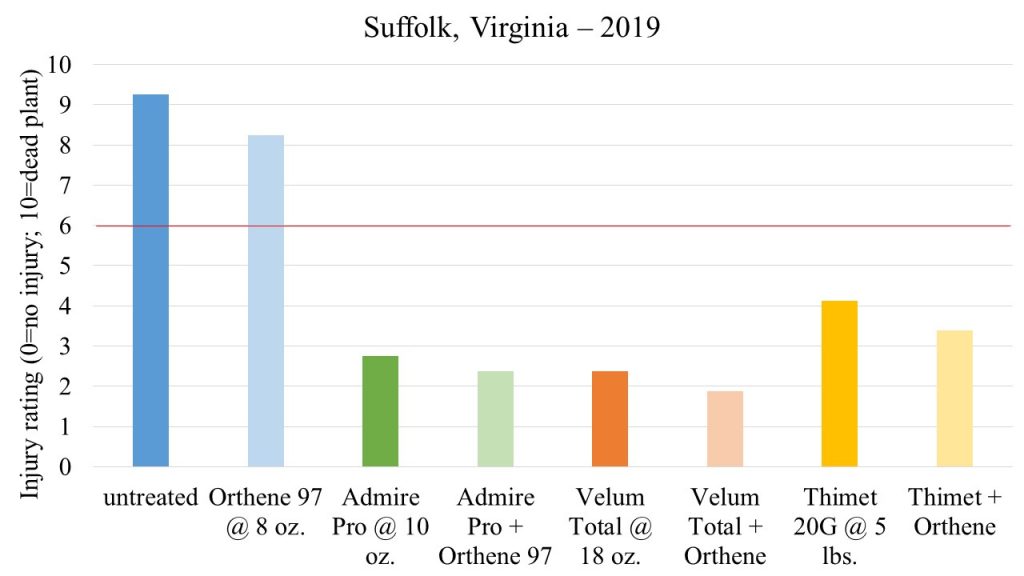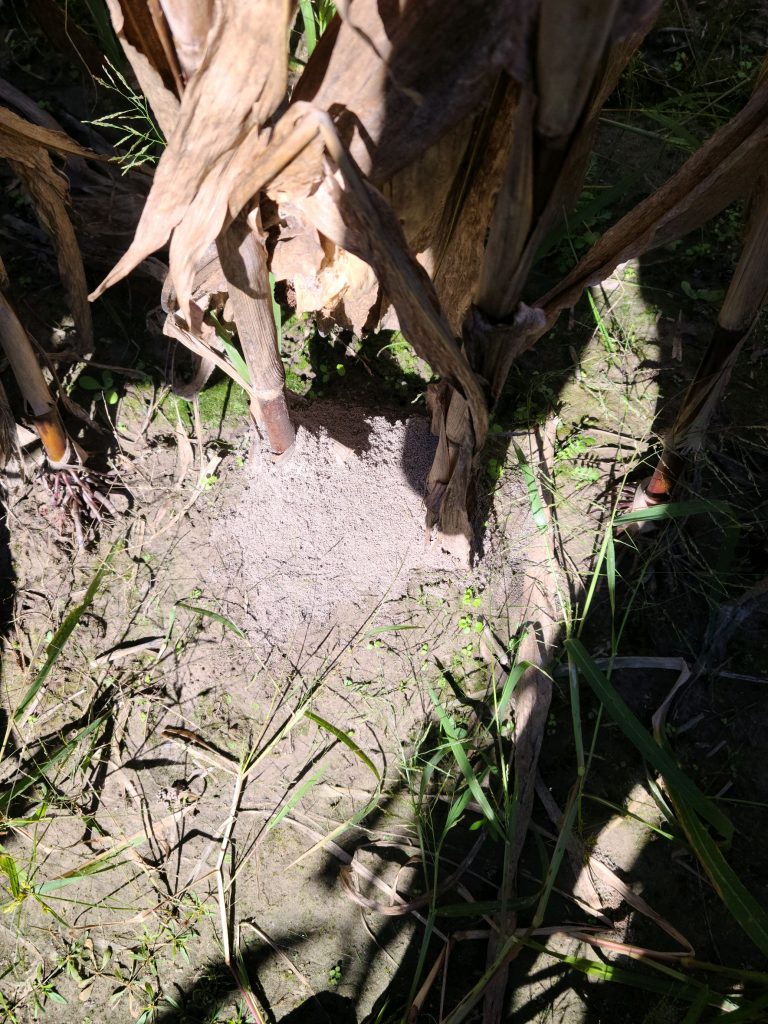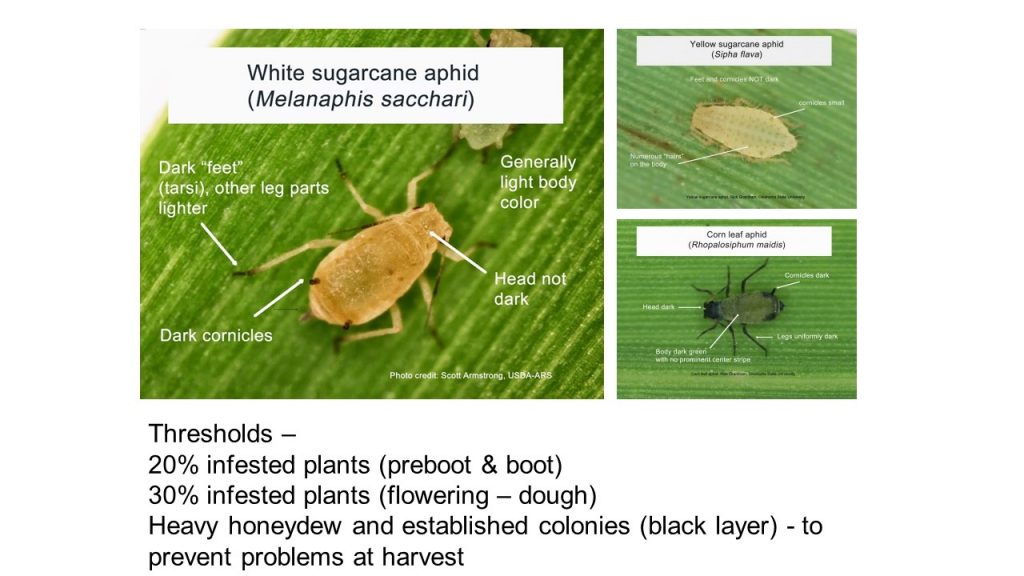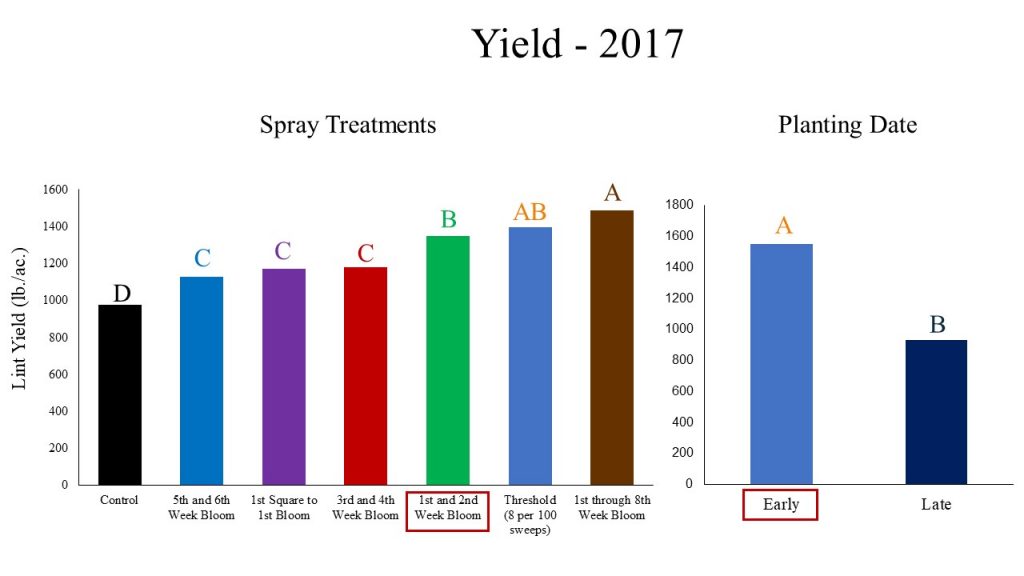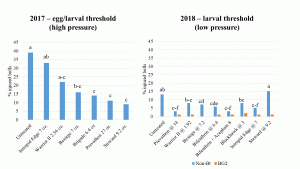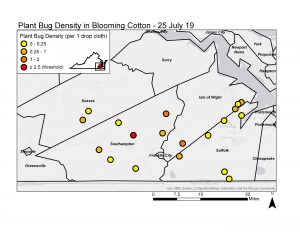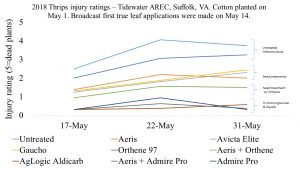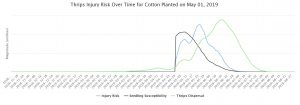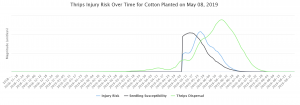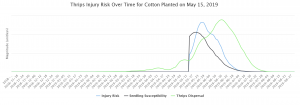The entomology program at the Tidewater AREC has spent this week scouting cotton fields across Virginia growing regions. First, I want to thank our technicians, graduate students, ANR Agents, Johnny Parker, and especially, our cooperating farmers. Cotton surveys are made possible through funding by Cotton Inc. and the Virginia Cotton Board.
I want to emphasize that overall plant bug numbers are very low, square retention very high, and the majority of fields will not be blooming by next week. Fields above threshold at this time are rare and sporadic. Use restraint when making pesticide applications without scouting first because we have many weeks left to manage insect pests. The most important time to manage plant bugs is during the first two weeks of bloom (see below graph from Seth Dorman’s work) and late-planted cotton is at higher risk of yield loss. Spraying at threshold (pre-bloom = 8/100 sweeps and <80% square retention) is as good as spraying every week (which is a pretty bad idea for secondary pest infestations, logistics, and costs).
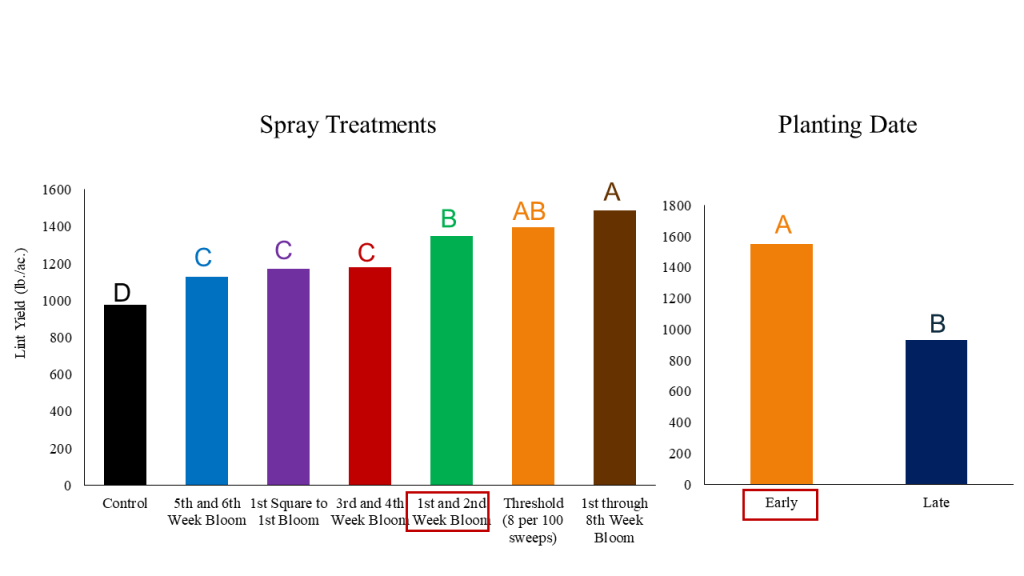
Until the 2nd week of bloom, scout fields using a sweep net. Pay attention to areas of the field where cotton is rank and or borders other crops, but do not make decisions based on hot-spots alone.
Several insecticides are effective for plant bugs in cotton pre-bloom including neonicotinoids (imidacloprid, thiamethoxam), acephate with or without novaluron (Diamond), flonicamid (Carbine), and sulfoxaflor (Transform). Rotating insecticides, opposed to spraying a broad-spectrum like acephate season-long, will save you trips across the field. See the below table from our 2020 experiments demonstrating that using sulfoxaflor (Transform) alone, flonicamid (Carbine) alone, rotating a neonicotinoid (Centric) with sulfoxaflor (Transform), and using acephate with novaluron (Diamond) resulted in fewer trips across the field when compared to acephate alone. Also note that acephate with novaluron (Diamond) resulted in a second spray only at the end of August when it is debatable whether we have time to make a harvestable boll (i.e., it is likely that yield protection was based on a single spray). ALL INSECTICIDE APPLICATIONS YIELDED THE SAME. I do not recommend pyrethroids because of documented resistance in Virginia. They may or may not work on your farm. Pyrethroid resistance increases as the season progresses. Please make the decision that is right for your farm based on your experience and knowledge.
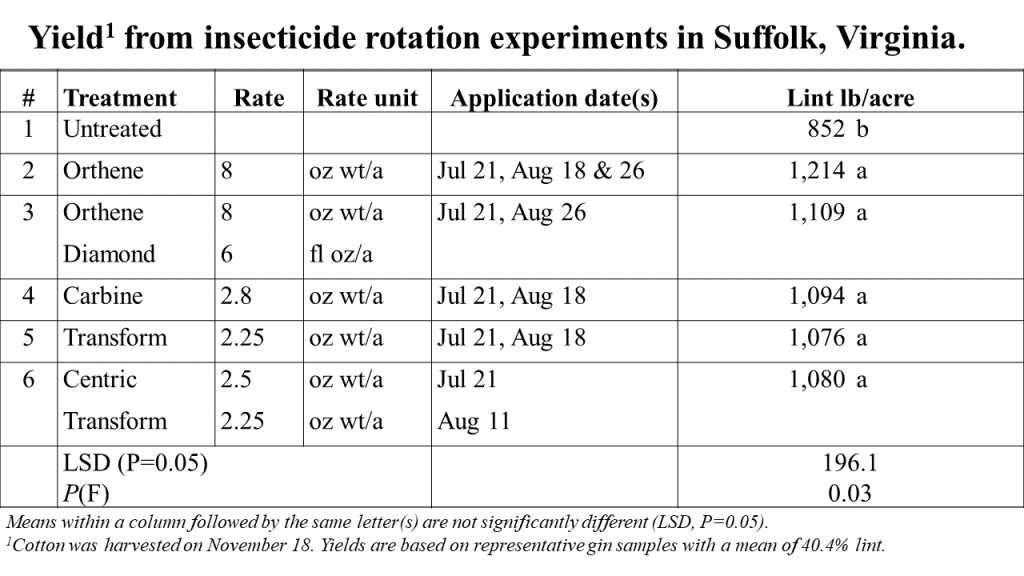
Please let me know if you have questions and or concerns. Email, call, or text. I hope everyone has a safe and happy 4th!

